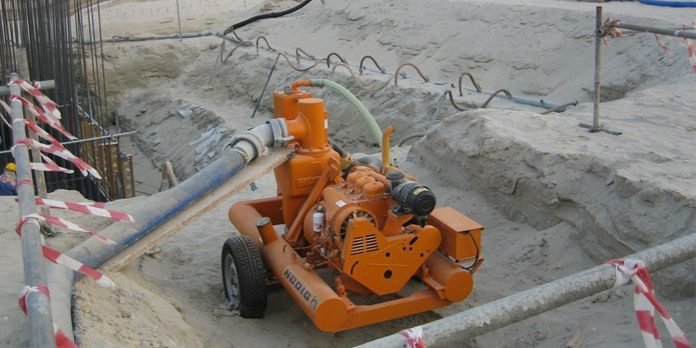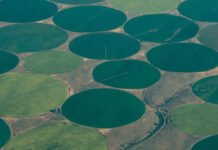Construction dewatering is not a foreign concept to both construction and mining sites. This is because more often than not there is the usual occurrence of either rainwater or groundwater being trapped within the excavation.
This hinders workflow since the workers are unable to carry on with site operations. As such, this water must be removed to keep work conditions safe. This is achieved through the use of dewatering pumps.
Pump selection
Selecting a dewatering pump can prove to be a daunting task for a nonprofessional. This is not only due to the numerous numbers in pump models of pumps available, but also the difference in types of applications that require different pumps. It is thus advisable to have an expert look into your application with regards to the type of pump you may require. This will not only save you the headache of getting it right, it also ensures you get the best pump for your application.
For instance, portable trash pumps are mostly used in construction projects where there is an open body of water that can be accessed by the piping or hose. These pumps are types of centrifugal pumps and are ideal for handling water with debris.
Also Read:5 Considerations When Choosing a Mine Dewatering Pump
Trash pumps can be used with either wet or dry priming systems. The former lacks an external priming system and as such require the pump housing to be manually filled with water. On the other hand, dry priming systems have a compressor, leaving out the need for filling the housing.
Other alternative types of pump technologies for construction dewatering include diaphragms, hydraulic submersibles and well points. Diaphragm pumps use rubber diaphragms inside the pump casing that open and close to create a vacuum and draw in water. However, inasmuch as they may low in volume, these pumps work best where muddy materials are involved.
When it comes to hydraulic submersible pumps, hydraulic power units are used to drive pump ends that are submersed in the water. Furthermore, these pumps are good for applications where the pump unit cannot be located close to the water.
Wellpoint systems are regularly used in trenchless applications. However, it is important to note that the ground must be dry to allow pipe bursting or other processes. Generally any project with the groundwater level close to the surface makes an ideal application for wellpoints. This is because the pumps are specially designed to handle a high percentage of air within the water that is drawn in from the ground material.
Suction Lift
The suction lift should also form part of the considerations when it comes to choosing a dewatering pump. This is the vertical distance of suction the pump has to overcome to bring the fluid into the pump. Suction lift extends over from the top of the pumping fluid into the pump casing at the eye of the impeller. According to Physics, a pump can only lift water that is less than 28ft when compared to the pumping fluid.
Also Read: Sykes Pumps, the solution for mine dewatering in Africa
Precautionary measures should be taken when dealing with high suction lifts. This is regardless of the type of pump being used. For instance, when it comes to self-priming centrifugal and end-suction centrifugal pumps, you should create a platform that the pump can safely rest on. This should be closer to the pumping fluid to reduce the suction lift, a practice known as “benching down.”
On the other hand, submersible pumps have the pump end submerged into the pumping fluid. This serves to eliminate the need for the suction lift. However, adequate power must be there to overcome the vertical distance that the fluid is discharged.
Management Practices
More often than not, the pumped water from a construction site will end up finding its way to lakes, wetlands, and streams that must be protected. This runoff from construction activities has been proven to be a sole contributor to polluted sources of water.
Particular attention should thus be paid to the discharge of the pumped site drainage. This is in terms of the location of the outlet, direction of the flow as well as filtration requirements. This process if often preceded by settling or filtering sediment. This process involves directing the discharge through bags made of geotextile fabric. These bags retain solid, sediment, and other particles allowing only clean water out of the bag.
Environmental considerations
When dewatering, it is best to consider the impact on the environment. For instance, minimizing the clearing as well as amount of exposed soil helps protect natural features. Moreover, to avoid soil getting exposed for long periods of time, it is best to schedule the construction activities in sequences.
In the case of water bodies, it is advisable to install vegetative buffers along them. This will aid in slowing down as well as filtering storm water runoff. Alternative techniques include sodding, mulching and stone cover. These help reduce the erosion of exposed soils and steep grades. Others such as oil and fuel containment, spill prevention and clean-up also help prevent the contamination of storm water runoff.




